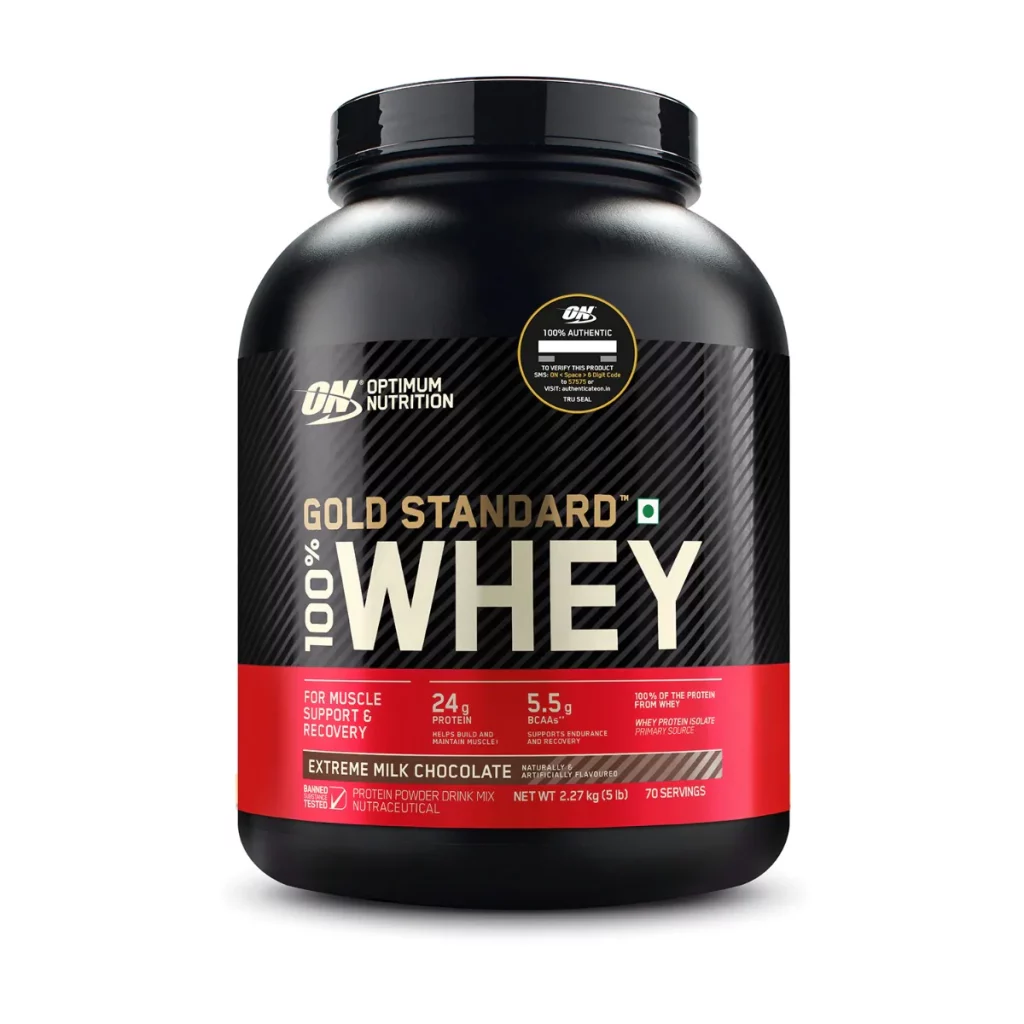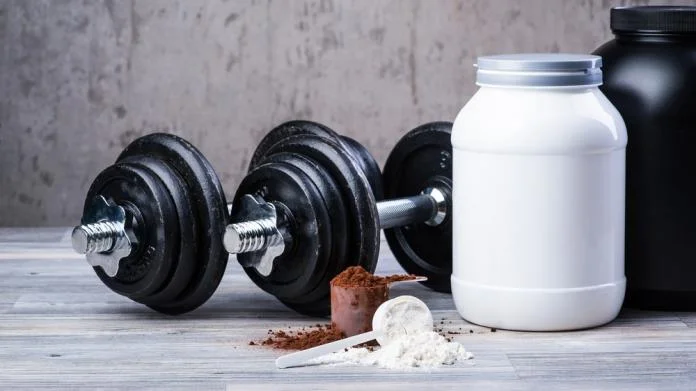
How Whey Protein Can Boost Your Muscle Growth and Recovery
If you’re into working out, you already know that protein is crucial for muscle development

If you’re into working out, you already know that protein is crucial for muscle development and repair. Protein is essential for muscle growth and repair, and it also plays a role in muscle recovery after exercise. The satiating effects of protein may also aid in controlling one’s appetite and weight.
However, not all protein foods are the same. Various foods vary in terms of completeness, digestibility, and bioavailability. Whey protein is well recognised as a superior protein source.
Protein isolated from milk is called whey protein. It’s a byproduct of the cheesemaking process that provides your body with every vital amino acid. Leucine, an essential amino acid for promoting muscle protein synthesis, is abundant in whey protein as well.
Learn how whey protein may help your muscles develop and heal in this article.
- Initiating Protein Synthesis in Muscle
- Stopping the loss of muscle protein
- Boosting Healing
- Building Muscle Without Fat
We will also discuss how to choose and use whey protein most effectively.
How Whey Protein Stimulates Muscle Protein Synthesis
The synthesis of muscle proteins from amino acids is known as muscle protein synthesis (MPS). Muscle protein synthesis (MPS) is crucial for muscle development and repair because it promotes muscular adaptation and strength gain.
Several variables, including physical activity, diet, hormones, and heredity, have been linked to MPS. Nutrition is particularly important since it supplies the building blocks for MPS.
Consuming sufficient amounts of protein and amino acids, particularly leucine, may increase MPS. Because it stimulates a biochemical mechanism known as mTOR, leucine is the most anabolic (growth-promoting) amino acid.
Leucine and other amino acids included in whey protein are known to activate MPS. About 3 grammes of leucine per 25 grammes of whey protein is adequate to optimally promote MPS after exercise.
Minutes after consumption, whey protein may be absorbed by the body and transported to the muscles for use. Because of how quickly it is absorbed, it may improve your muscles’ anabolic reaction to exercise.
Whey protein has been proven in many trials to boost MPS more than other protein sources, including casein and soy. In contrast to casein, whey protein was reported to boost muscle protein synthesis (MPS) by 122% after resistance training.
Whey protein has been shown to stimulate muscle protein synthesis, which in turn leads to increased muscular growth and strength. When dieting or becoming older, whey protein may help you keep your muscle mass intact.
How Whey Protein Reduces Muscle Protein Breakdown

The breakdown of already existent muscle tissue into amino acids is known as muscle protein breakdown (MPB). Because it helps your body to recycle old or damaged proteins and replace them with new ones, MPB is also crucial for muscle development and repair.
However, excessive MPB may cause muscular atrophy and slow recovery. Long periods of exertion, fasting, or a diet low in protein may all lead to this condition. Muscle amino acids may be used as a source of energy or as a substrate in certain conditions.
Whey protein may lessen MPB because it provides muscles with a continuous supply of amino acids, which keeps them from being consumed as fuel or broken down by enzymes. Some variables that promote MPB, such cortisol and myostatin, may have their activity suppressed by consuming whey protein.
Multiple studies have demonstrated that whey protein, as opposed to casein or soy protein, is superior in lowering MPB levels. Casein was shown to raise MPB by 31% following resistance exercise, whereas whey protein decreased it by 8.4%.
Whey protein may help you maintain or gain muscular growth and strength by decreasing muscle protein breakdown. The age-related loss of muscle mass and function, known as sarcopenia, may be halted or even reversed with the aid of whey protein.
How Whey Protein Enhances Recovery
After a workout, your body needs time to repair itself so that your muscles, energy, and immunity can all return to normal. Muscles can only adapt, develop, and get stronger over time with proper recovery.
Recovery may be aided by whey protein since it lessens post-workout muscle pain, inflammation, and oxidative stress. Glycogen is the primary fuel source for working muscles, and whey protein may help restore this supply.
Some of the ways in which whey protein aids in recuperation are as follows:
- Whey protein reduces muscle soreness: Muscle soreness, a frequent sign of exercise-induced muscle damage (EIMD), is alleviated by consuming whey protein, which is a byproduct of the digestion of whey. Being sore from working out might hinder your effectiveness and decrease your desire to exercise again. Muscle pain may be alleviated by consuming whey protein, which contains amino acids that can help repair damaged muscle fibres and lessen inflammation. Some cytokines and growth factors involved in muscle inflammation and repair may have their activity modified by whey protein.
- Whey protein reduces inflammation: The inflammation your body experiences as a result of exercise-related stress or injury may be mitigated by consuming whey protein. Damaged cells and debris may be removed and the healing process can begin thanks to inflammation. However, excessive inflammation is dangerous and might slow healing. The generation of inflammatory mediators including C-reactive protein (CRP), interleukin-6 (IL-6), and tumour necrosis factor-alpha (TNF-alpha) may be reduced by consuming whey protein. Increased levels of glutathione (GSH), a potent antioxidant that protects your cells against oxidative stress, are one of the anti-inflammatory effects of whey protein.
- Whey protein reduces oxidative stress: The oxidative stress caused by producing more free radicals than your body can neutralise with antioxidants is mitigated by whey protein. Unstable free radicals may wreak havoc on your body’s cells and DNA. Exercising for a long period or at a high intensity might enhance post-exercise oxidative stress. Recovery may be slowed and chronic illness risk increased due to oxidative stress. By boosting glutathione (GSH) and other antioxidant levels, whey protein helps alleviate oxidative stress. Some of the amino acids in whey protein may also scavenge free radicals.
- Whey protein replenishes glycogen stores: Glycogen is a kind of glucose storage that serves as an exercise fuel source. Depleted glycogen levels are associated with decreased performance and endurance, as well as increased fatigue and muscle injury. After a workout, your muscles are more receptive to insulin and glucose absorption, leading to maximum glycogen production. Restoring muscular glycogen reserves, whey protein promotes insulin secretion and glucose absorption. Gluconeogenesis, in which glucose is synthesised from amino acids rather than carbohydrates, may also provide part of the glucose needed by the body.
Whey protein’s ability to speed up recovery after exercise means it may boost performance and prevent plateaus. Overtraining syndrome, characterised by persistent weariness, decreased performance, altered mood, and heightened infection susceptibility, is a common side effect of training too hard without taking enough time to recuperate. Whey protein may help you avoid these symptoms.
How Whey Protein Increases Lean Body Mass

The term “lean body mass” (abbreviated LBM) refers to a person’s entire body weight less their fat mass. Lean body mass (LBM) accounts for everything you are except fat. Lean body mass (LBM) is crucial to your health, fitness, and physical beauty.
Whey protein helps boost lean body mass by promoting muscle development and protecting against muscular atrophy. Compared to other protein sources like casein or soy, whey protein has been demonstrated in several studies to build lean body mass (LBM) more effectively. One research showed that after 9 weeks of strength exercise, whey protein increased lean body mass by 3.3 kg, casein by 2.3 kg, and soy by 1.8 kg.
When dieting, whey protein may help you either keep the same amount of lean body mass (LBM) or even gain some. Both fat and muscle are often lost throughout a weight loss programme. If you lose too much muscle, your metabolism, performance, and health might all suffer. Due to the amino acids it contains, whey protein may help you maintain your muscle mass while cutting calories and fat. Whey protein’s ability to make you feel full and content also benefits your efforts to control your weight.
Whey protein may help you become in better shape and enhance your body composition by boosting lean body mass (LBM). Physical performance, stamina, and health benefits are all areas where whey protein excels.
Conclusion
Whey protein may help you achieve your health and fitness goals, whether those goals include increasing muscle mass, decreasing body fat, or increasing physical output. Whey protein is useful for muscular growth, but it may also improve your mood, blood pressure, and immunity.
Consuming whey protein during the first three hours after a workout is optimal since that is when muscle fibres are most receptive to the amino acids. When taken with carbohydrates, it speeds up the recovery of glycogen stores and the release of insulin. However, as a general rule of thumb, when supplementing with whey protein, you should aim for 0.25-0.4 g of protein per kilogramme of body weight at each meal or snack.
Some people may have gastrointestinal discomfort after consuming whey protein, however this is uncommon. Whey protein isolate and hydrolysate are good for persons with lactose intolerance or a milk allergy since they contain very little lactose and milk proteins. Before beginning a whey protein routine, you should see your doctor if you have any preexisting conditions or are on any drugs.
